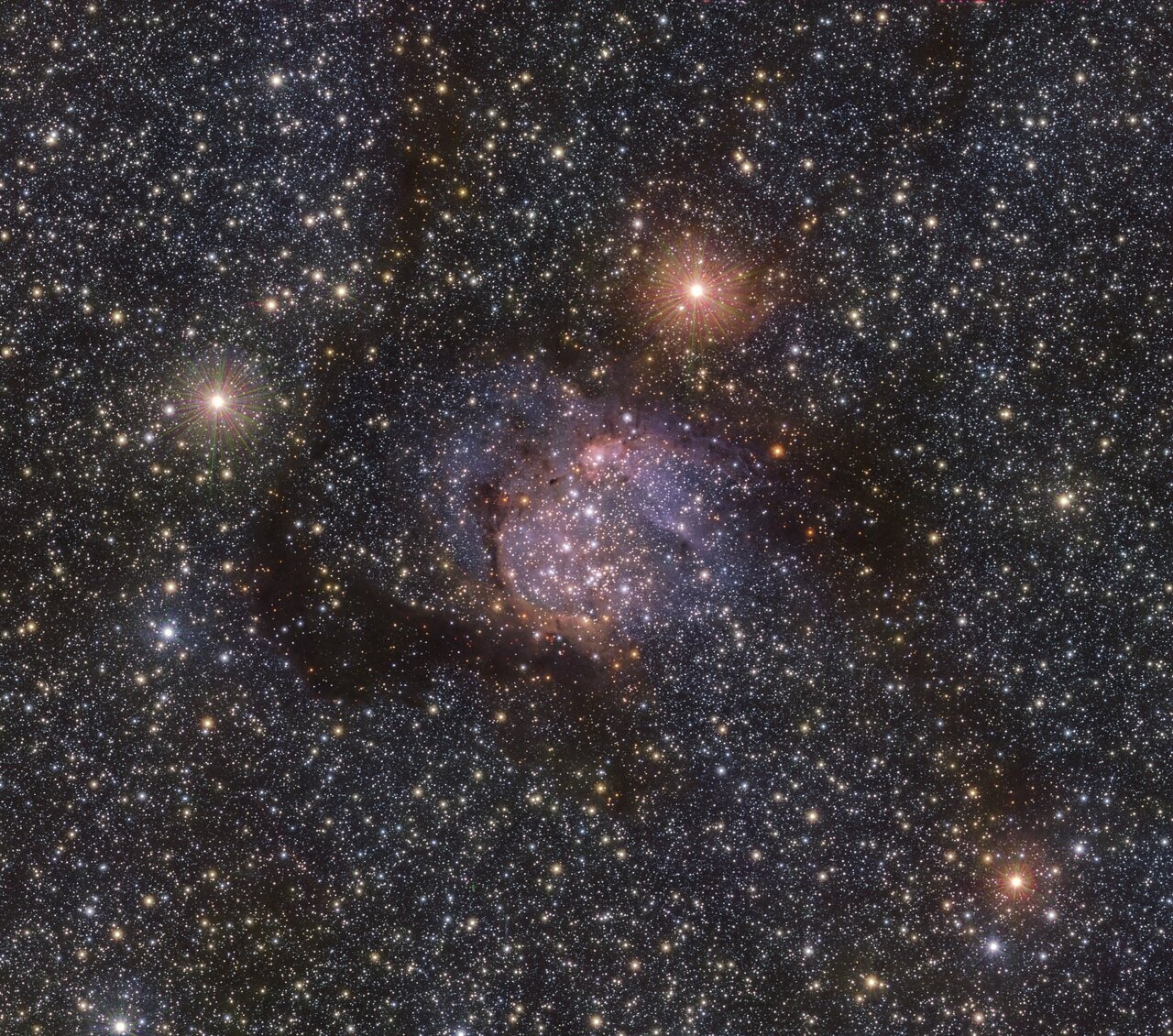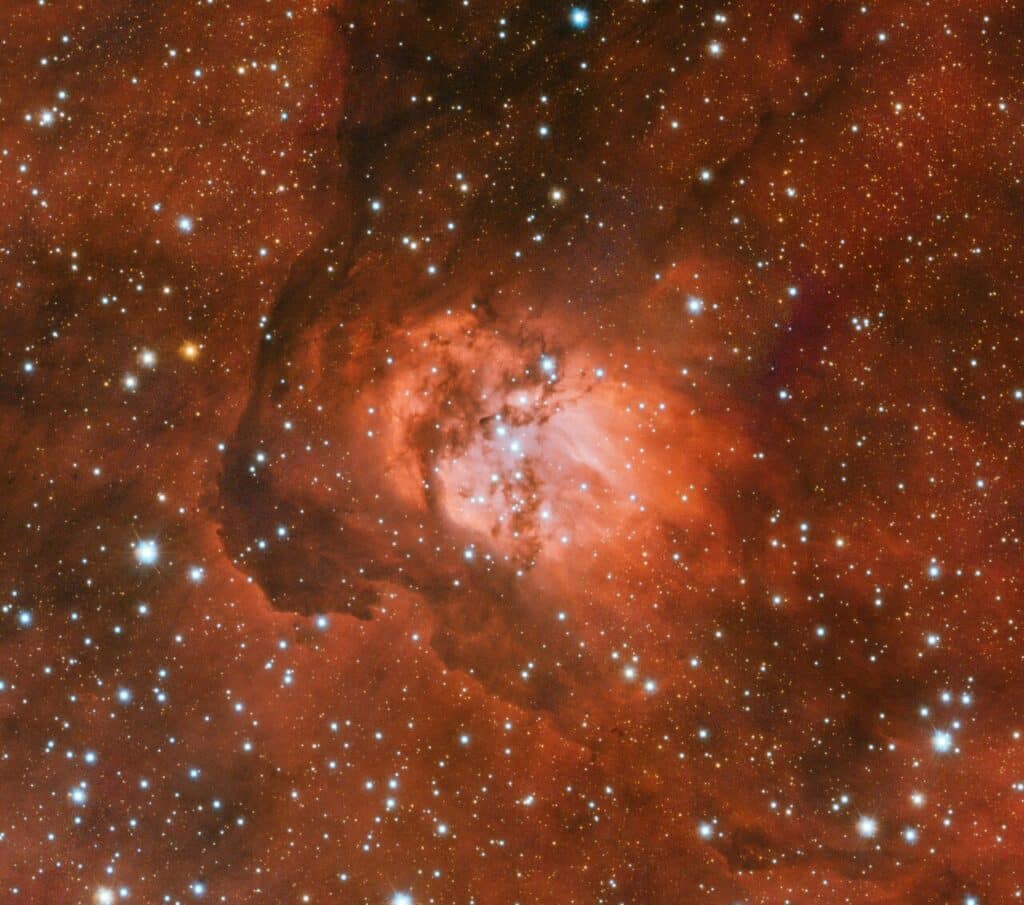Many stars can be seen in this new infrared photo of the Sh2-54 nebula. Located in the constellation Serpens, this stunning stellar nursery was filmed in all complex details using the VISTA infrared viewing telescope located at the ESO Paranal Observatory in Chile. While the visible light we can see is absorbed by interstellar dust, infrared light can penetrate thick clouds of dust in space, revealing previously unseen details.

Infrared images of nebulae help astronomers learn more about how stars form. The new image showed many stars by the orange glow of the nebula. Compare the infrared image filled with starlight with the image of the Sh2-54 nebula in visible light (below).

Numerous nebulae or clouds of gas and dust that contribute to the formation of stars are located in the tail of the constellation Serpens — named as such due to its resemblance to a snake. Such hot spots of star birth include the Eagle, Omega and Sh2-54 nebulae. Astronomers focused on the Sh2-54 nebula, located about 6,000 light-years from Earth. The letter S in the name of the space object refers to astronomer Stuart Sharpless, who was responsible for cataloguing more than 300 nebulae in the 1950s.
The image was taken using a high-sensitivity camera with a resolution of 67 million pixels on the VISTA telescope as part of the VISTA Variables study under the supervision of the Via Lactea eXtended project. This is a multi-year project to observe the bulge and the southern disk of the Milky Way in the near infrared range, which lasted six years.
Earlier we reported on how Hubble was shooting the star house.
According to Tech Explorist
Follow us on Twitter to get the most interesting space news in time
https://twitter.com/ust_magazine

